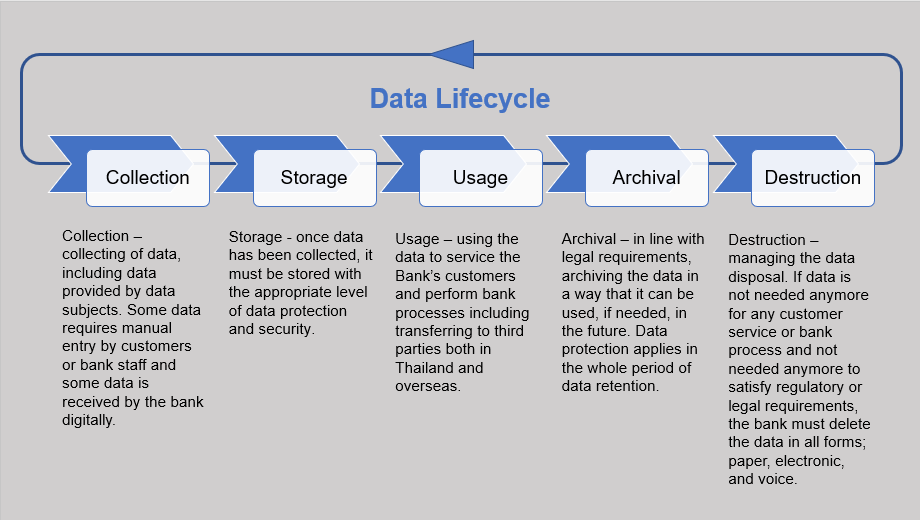Discovering the Importance of Information Destruction in the Context of Computer Safety And Security Solutions and Protecting Confidential Data
In a period where data breaches are significantly common, the relevance of effective information damage can not be overstated. What methods can companies execute to improve their information destruction procedures?
Recognizing Information Destruction
Data damage is a crucial element of computer system security that involves the long-term removal of information from storage devices to stop unapproved accessibility and potential data breaches. In a progressively digital landscape, companies encounter enhanced threats related to sensitive information being improperly accessed or made use of. Efficient data devastation safeguards versus these hazards, ensuring that confidential dataâEUR" such as customer information, intellectual building, and monetary recordsâEUR" can not be recuperated after disposal.
Comprehending the value of information damage prolongs past simple compliance with governing and lawful structures; it is essential for maintaining organizational honesty and count on. When data is improperly managed or improperly damaged, the repercussions can be serious, including economic loss, reputational damages, and legal obligations.

Methods of Information Removal

One widespread approach is data wiping, which involves overwriting existing data with arbitrary patterns several times. This method makes the initial information irretrievable, making it a preferred selection for companies looking for to shield personal details.
Another approach is degaussing, which makes use of an effective magnetic area to interfere with the magnetic domain names on storage space gadgets, successfully eliminating the information. This technique is especially efficient for magnetic media however is not appropriate to solid-state drives.
Physical damage is another robust approach, crushing or involving the shredding of storage tools. This approach assurances that data recovery is basically difficult, making it suitable for very sensitive info.
Lastly, security can act as a complementary approach to information elimination. By encrypting data before deletion, companies can include an extra layer of security, making certain that also if remnants are recouped, they stay inaccessible without the decryption trick. Each approach must be chosen based upon the level of information level of sensitivity and the specific protection demands of the company.
Legal Compliance and Information Safety
Organizations must browse a complex landscape of lawful requirements associated with data safety, especially after carrying out methods of information eradication. Different regulations, such as the General Data Defense Policy (GDPR) and the Medical Insurance Transportability and Accountability Act (HIPAA), impose rigorous guidelines on exactly how companies should manage and dispose of delicate data. Failure to abide by these regulations can result in substantial legal repercussions, consisting of significant fines and reputational damage.
Information damage procedures have to be carefully recorded to show conformity with relevant laws and standards. This paperwork not just functions as evidence of adherence to lawful commitments but also shows a commitment to securing delicate info. Organizations needs to additionally develop clear plans regarding data retention and destruction timelines, ensuring that data is not held longer than necessary.

In addition, normal audits and evaluations of data destruction practices are vital to keep conformity and adapt to evolving lawful structures (data destruction). By proactively dealing with legal needs, companies can alleviate risks connected with information breaches and demonstrate their dedication to data security. Inevitably, focusing on legal conformity in data destruction procedures is not just a governing responsibility, but a basic element of a robust data safety approach
Influence On Business Track Record
The credibility of an organization can be dramatically impacted by its approach to data damage and management. In today's electronic landscape, where data violations can occur at any kind of moment, the failing to correctly dispose of delicate information can bring about serious effects. Organizations that inadequately take care of data damage threat exposing personal customer info, which not just violates privacy regulations but likewise deteriorates trust among stakeholders and clients.
A damaged online reputation can result in reduced client commitment, as clients become hesitant to involve with an organization that has shown carelessness in securing their information. Adverse attention bordering an information breach can have a lasting effect, as prospective clients may be prevented by the viewed absence of safety. This can cause a straight decrease in profits and market share.
In addition, organizations that focus on information damage as component of their safety method can improve their credibility by showcasing their commitment to protecting sensitive information. By adopting rigorous information monitoring methods, organizations can not only mitigate threats yet likewise position themselves as trustworthy entities in their respective sectors, consequently enhancing their overall brand photo.

Ideal Practices for Secure Disposal
Carrying out finest practices for safe disposal of data is essential for mitigating dangers related to information breaches and ensuring conformity with privacy guidelines. Organizations should take on an extensive information disposal policy that lays out procedures for both physical and electronic information destruction.
For physical information storage gadgets, such as disk drives, shredding or degaussing is suggested to stop data recuperation. Furthermore, companies should preserve a chain of safekeeping documents during the disposal process, making certain responsibility and traceability from this source of disposed things.
For digital data, utilizing software that follows market criteria for data wiping is critical. This software ought to overwrite existing information numerous times, making recovery practically view difficult. It is additionally important to confirm the performance of the information destruction process with audits or third-party evaluations.
Educating staff members on secure disposal techniques includes an additional layer of protection, as human error can often result in data direct exposure. Consistently updating and evaluating disposal policies guarantees positioning with progressing guidelines and technical innovations. By applying these ideal techniques, companies can significantly reduce the threat of unapproved information accessibility and boost their general data security technique.
Conclusion
To conclude, data destruction is a basic facet of computer system safety services that guarantees the protection of confidential details from unapproved gain access to. Executing effective approaches of information elimination, adhering to legal conformity, and acknowledging the influence on business online reputation are crucial elements of an extensive data protection method. By adopting ideal methods for protected disposal, companies can promote trust with customers and protect sensitive information, ultimately adding to a much more secure electronic landscape.
In an era where information breaches are increasingly typical, the value of reliable data destruction can not be overstated.Data destruction is an important component of computer system safety that entails the irreversible removal of information from storage space devices to protect against unauthorized access published here and prospective information violations. Organizations ought to likewise develop clear policies concerning data retention and damage timelines, ensuring that data is not held longer than needed.
By proactively dealing with legal needs, organizations can alleviate dangers associated with data breaches and demonstrate their commitment to data safety (data destruction). Eventually, focusing on lawful conformity in information destruction processes is not just a governing obligation, but an essential aspect of a robust information safety and security method